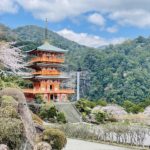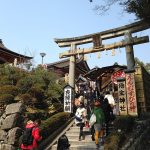
Must See Shrines and Temples of Tokyo
Apr 25, 2022 By Michael Stigall
Many of Japan’s most famous shrines and temples are in the old capital of Kyoto. While not as historic as the city it replaced as the nation’s political, social, and...[ Click to read more ]

Day Trips: Wakayama and the Kumano Kodo Trail (Easy)
Aug 31, 2021 By Bert Wishart
How many UNESCO Heritage sites do you think that you could fit in a day? One? Two? Three at the most? Well, if you visit Kumano Kodo in the southern...[ Click to read more ]

Hiroshima’s Most Important and Spectacular Shrines and Temples
Jan 29, 2021 By Bert Wishart
While it is perhaps Kyoto that is Japan's best-known city for shrines and temples, it doesn't mean that you have to go quite that far to visit some breathtaking and...[ Click to read more ]

Onomichi – Temples, Ramen and Cats Galore at Hiroshima’s Seaside Jewel
Aug 31, 2020 By Bert Wishart
Flanked to the north by steep hillsides and to the south by the rolling Seto Inland Sea, the city of Onomichi is quaint, picturesque and full of history. It makes...[ Click to read more ]

What is the ShichiGoSan Ceremony?
Nov 24, 2019 By Jason Gatewood
Traditionally held on November 15, the Shichigosan (七五三, literally 7-5-3) ceremony is a rite that originated around 750 AD in the Heian period to celebrate the passage into middle childhood...[ Click to read more ]

Hiroshima’s Ebisuko Festival 2018
Oct 29, 2018 By Matt Mangham
Across Japan, Ebisu is one of Shinto’s most popular deities. Deaf and lame, and always laughing (hence the Japanese term ‘ebisugao’ for a smiling face) Ebisu is the god of...[ Click to read more ]

Firewalking at Miyajima 2018
Oct 29, 2018 By Matt Mangham
Japan has a slew of fire rituals, the most famous of which being Kyoto’s famous Daimonji Festival. These festivals, leveraging ancient notions of purification and renewal, continue to draw people...[ Click to read more ]

Myths & Legends in Kansai
Jul 27, 2018 By Justin Hanus
Japan is a country rich with mythology and fascinating tales. The Kansai region, with its many popular tourist areas and shrines to gods and kings, is no different. From folklore...[ Click to read more ]

The Most Popular Temples and Shrines in Kobe
Jun 26, 2018 By Justin Hanus
Japan is a melting pot of several religions in the East. There are religions that have immigrated from different parts of Asia and there are those that originated within the...[ Click to read more ]

Experience a Firelit Noh Performance at Nara’s Kofukuji Temple
Apr 24, 2018 By Justin Hanus
Traditional Noh performances might occur at temples across Japan, but Nara’s Kofukuji Temple is the original home of the sacred event, and seeing a performance there is a truly unforgettable...[ Click to read more ]
